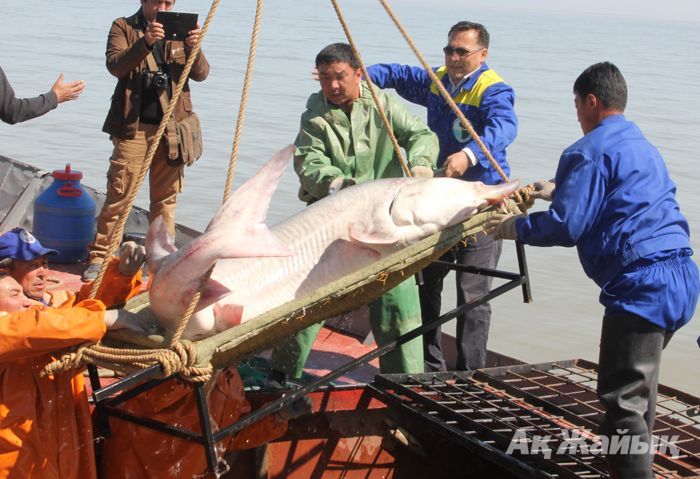By Zulfiya Bainekeeva
 Five full-grown beluga fish have been released into their native ground – the Caspian Sea. On May 1, the Ural-Atyrau Sturgeon Plant released the breeders into their habitat.
Five full-grown beluga fish have been released into their native ground – the Caspian Sea. On May 1, the Ural-Atyrau Sturgeon Plant released the breeders into their habitat.
Since the beginning of the fishing season the plant caught 40 breeding fish - five belugas, four sturgeons, 31 starred sturgeons. For fish breeders under the contract on cooperation All of them have been caught by the fishermen of “Amangeldy” fishing cooperative that works closely with the sturgeon plant. They state order that they need to implement sets out the breeding of 3.5 million grown up standard sturgeon fish.
- To-date we recovered over 2 million eggs of beluga fish that were impregnated and placed in incubatory devices. Incubation process is going on successfully. The reproductive products (caviar, seed) of five out of six beluga breeders (two females and two male fish) have been recovered by “cushion” method, i.e. from live fish using reduced impact method, - says the Director of Ural-Atyrau Sturgeon Plant Gilman Sarsemaliev.
- One male beluga has been caught last year in autumn. We took the risk and kept it at the plant, though we don’t have adequate conditions for its keeping, but it survived the winter in one of our ponds and was involved in the process of seed recovery. A young female beluga fish gave a few days ago 21 kilograms of caviar that was ready for fertilization. With her indicator of 33 eggs per gram, it is nearly 700mln ovicells. The second 230 kg female beluga caught in this season gave 41 kg of caviar, but she didn’t survive. As a rule, it is difficult to keep large fish alive because of its sizes.
The scientists say that beluga can live up to 100 years and female beluga lays eggs when it is 16-17 years old. The other fish experts say that in captivity female beluga can produce caviar every three years on average.
- But we don’t have enough capacity and adequate conditions for keeping adult species, therefore, it more rationale to release them into the sea,“ - says Sarsemaliev.
The Northern part of the
Photos of the author.
 В Атырау -8
В Атырау -8